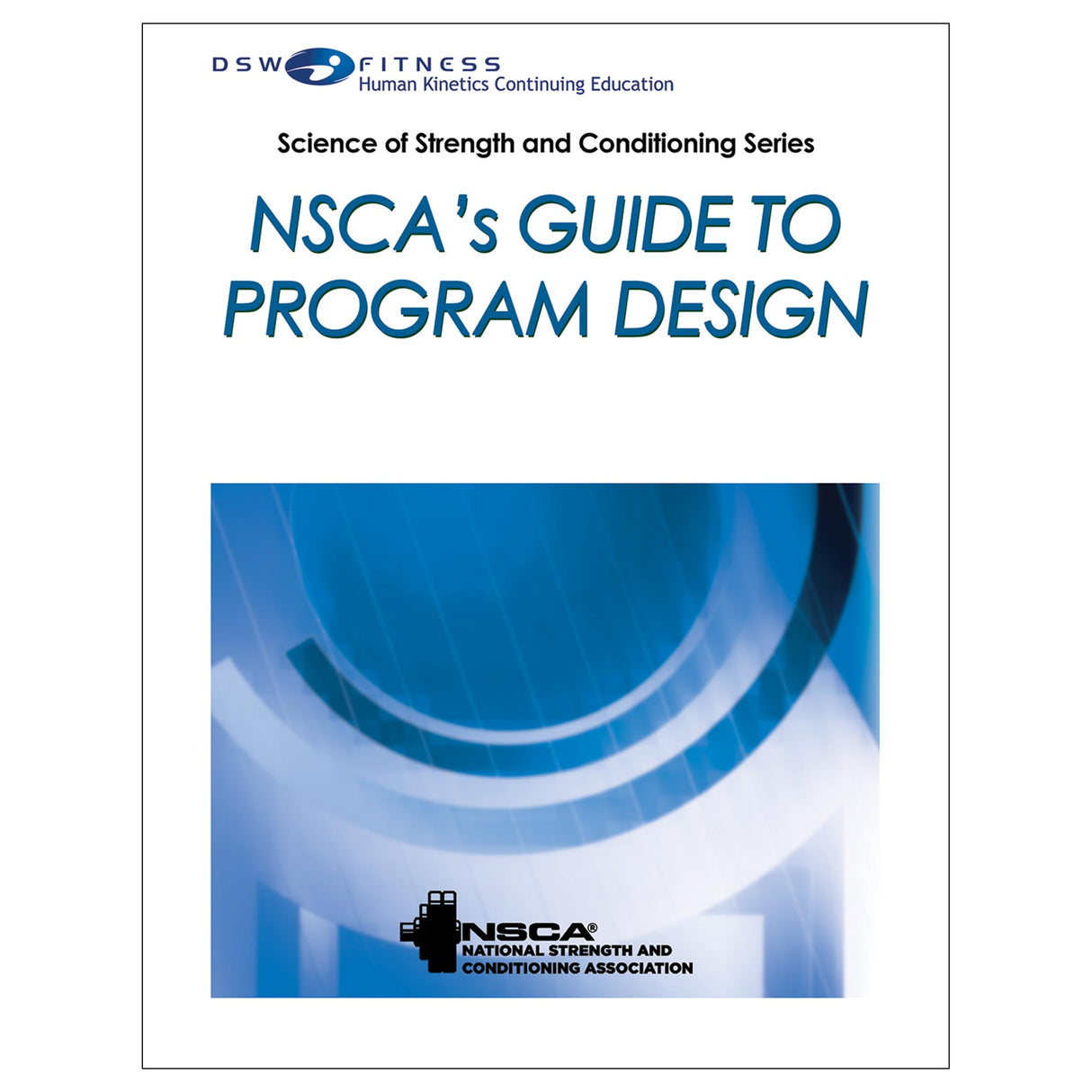NSCA's Guide to Program Design Print CE Course Without Book
Author: Human Kinetics
$164.95 CAD
Course components are delivered as printed products:
• Study guide
• Continuing education exam
• NOTE: The text NSCA’s Guide to Program Design is required for successful completion of this course but is not included in this version. Purchase this version only if you already own the text or e-book.
Learning Objectives
• Understand all aspects of a needs analysis and its implications to training.
• Implement assessment programs to evaluate the effectiveness of training programs.
• Understand the influence of dynamic warm-up protocols on injury risk.
• Apply the concepts of progressive overload, specificity, and variation to resistance training programs.
• Manipulate training variables and select optimal exercises to match the goals of the program and avoid training plateaus.
• Identify the differences between aerobic and anaerobic-based sports and the training needs of each.
• Identify the metabolic demands of a sport and understand how metabolic adaptations to training can affect performance.
• Understand when to implement balance, stability, speed, and agility training in overall program design.
• Understand the theories behind various principles of periodization and program design.
• Utilize different training phases to optimize performance.
NSCA's Guide to Program Design Print CE Course offers current information, guidance, and protocols from respected scientists and practitioners with expertise in strength and conditioning program design. Developed by the National Strength and Conditioning Association (NSCA), this course offers strength and conditioning professionals a scientific basis for developing training programs for specific athletes at specific times of year.
Straightforward and accessible, NSCA’s Guide to Program Design Print CE Course presents a detailed examination of considerations and challenges in developing a program for each key fitness component and fitness performance goal. This authoritative course moves beyond the simple template presentation of program design to help professionals grasp the reasons and procedures for sequencing training in a safe, sport-specific manner. The companion text offers sample workouts or training plans for athletes in a variety of sports, technique photos and instructions for select drills, and a sample annual training plan that shows how to assemble all the pieces previously presented. Plus, extensive references offer starting points for continued study and professional enrichment.
NSCA’s Guide to Program Design Print CE Course progresses sequentially through the program design process. It begins by examining the process of athlete needs assessment as well as performance testing considerations and selection. Next, professionals will get performance-related information on dynamic warm-up and static stretching and learn dynamic warm-up protocols and exercises. Professionals will find evidence-based information on program development, including considerations and adaptations as well as methods and strategies for resistance, power, anaerobic, endurance, agility, speed, and balance and stability training. Finally, professionals will explore training integration, periodization, and implementation.
The companion study guide includes a course syllabus, course instructions, learning objectives, and a referenced answer key to help individuals focus on course content. It emphasizes key concepts of the corresponding text to prepare individuals for the exam (composed of 100 multiple-choice questions) at the completion of the course. Upon passing the exam, individuals may print out and submit a certificate for continuing education credit.
The fitness, safety, and performance of athletes reflect the importance of continued education in the science of strength and conditioning. NSCA’s Guide to Program Design Print CE Course diminishes the gap between scientist and practitioner by equipping professionals with evidence-based information and applications.
Audience
A course for any fitness professional, including strength and conditioning professionals, personal trainers, athletic trainers, and coaches interested in the topic.
Course Syllabus
Course Materials
Course Instructions
Learning Objectives
Learning With the NSCA’s Guide to Program Design Book
Chapter 1: Athlete Needs Analysis
Chapter 2: Athlete Testing and Program Evaluation
Chapter 3: Dynamic Warm-Up
Chapter 4: Resistance Training
Chapter 5: Power Training
Chapter 6: Anaerobic Conditioning
Chapter 7: Endurance Training
Chapter 8: Agility Training
Chapter 9: Speed Training
Chapter 10: Balance and Stability Training
Chapter 11: Training Integration and Periodization
Chapter 12: Training Program Implementation
Learning Activities Answer Key
Exam and Evaluation
Exam Answer Sheet
Exam
Course Evaluation
Certificate Information





